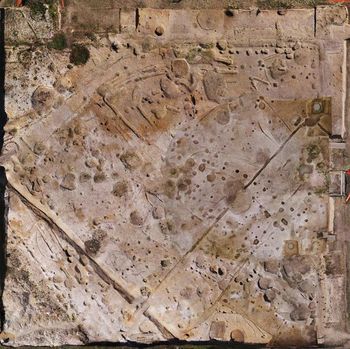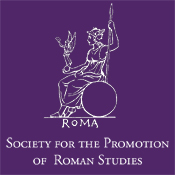Silchester Insula IX: The Claudio-Neronian Occupation of the Iron Age Oppidum
John R. L. Allen, Rowena Banerjea, Catherine Barnett, Edward Besly, Joanna Bird, Kate Clark, Andre Colonese, Samantha R. Cook, H. E. M. Cool, Oliver Craig, Nina Crummy, Emma Durham, Delphine Frémondeau, Claire Ingrem, Mary Lewis, Lisa Lodwick, Alexandre Lucquin, Sara Machin, Gundula Müldner, Matt Phelps, Mark Robinson, Jane Timby, 2020. https://doi.org/10.5284/1076947. How to cite using this DOI
Data copyright © Prof Michael Fulford, Society for the Promotion of Roman Studies unless otherwise stated
This work is licensed under a Creative Commons Attribution 4.0 International License.
Resource identifiers
- ADS Collection: 3750
- DOI:https://doi.org/10.5284/1076947
- How to cite using this DOI
Introduction

The data are associated with the fourth monograph publication of the excavation of Silchester Insula IX which took place between 1997 and 2014. This excavation, also known as 'The Silchester Roman Town: The Insula IX Town Life Project', aimed to recover a continuous sequence of stratified evidence with which to reconstruct a rich picture of the changing nature of the occupation of a large area (3025m²) of one insula of the town between the beginning of the settlement in the late pre-Roman Iron Age, c. 20/10 BC, and the abandonment of the town between the 5th and the 7th century AD. The data published here derive from the period of occupation following the initial Roman invasion of Britain between c. AD 43-4 and c. AD 85 (= Insula IX Period 1).
During this period the layout of the pre-existing Iron Age settlement of Calleva organised on a north-east/south-west and north-west/south-east orientation and divided into sub-rectangular compounds remained essentially unchanged. The excavated area revealed a large part of one compound divided by two lanes or trackways from two others of which only small areas were contained within the excavated area. At an early date the oppidum was crossed by at least two major Roman roads, one aligned north-south, which formed the eastern boundary of the excavated area, the other east-west, the road from London to the west of Britain.
Within the excavated area were the remains of both round and rectangular buildings, all of timber construction, several wells and clusters of rubbish pits. The latter produced rich assemblages of material culture demonstrating a great diversity of connections both within southern Britain and across the Channel to Gaul and the Roman Mediterranean, as well as groups of human, faunal, insect and seed and plant remains, the latter including several imported varieties. In addition, the publication contains overviews of all the Roman coins up to AD 117 from Insula IX, all the Roman brooches and toilet instruments from Insula IX and chapters on isotopic insights into the geographic origins of two miniature dogs, radiocarbon dating, geochemistry and micromorphology.






